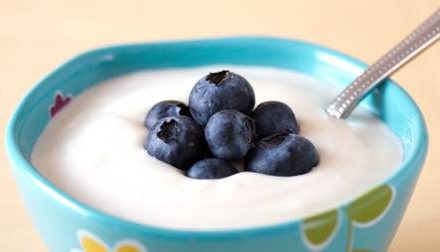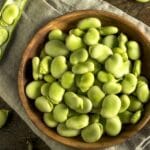The market for ice cream in India reached a value of INR 201.4 billion in 2020. The market for ice cream in India is further expected to grow at a CAGR of 14% between 2021 and 2026 to reach a value of approximately INR 442 billion by 2026, writes Rati Ram Gupta and M.K. Garg.
Table of Contents
The ice cream is made up of two words ice and cream. Ice is made by reducing the optimum temperature of water to 0oC to –19oC by artificial means. The cream is prepared and collected from the milk of buffalo, cow, goat, sheep, camel, mare and yak as well as from aerated juice of different fruits, various shakes, and water fogging layers, sea products and meat products. After adding some amount of sugar, colour, flavour,, and pieces of spices, fruits, nuts, eggs and meats, the Ice Cream becomes delicious, having anattractive appearance.
The quality of ice cream is judged by physical and texture appearance, pigment, flavour, taste, shape, lustre, softness, piquancy, purity and contents. It should be free from foreign impurities like dirt, dust, stones and soil particles, wooden pieces, glass pieces, plastic threads, etc. In addition, it should not have harmful chemicals or synthetic contents. The ice cream should be free from algae, fungi, bacteria, protozoa, viruses, etc., which cause health hazards to the consumers. It should always be fresh and free from contaminants and adulterants.
Manufacturing of Ice Cream in India
The Indian ice cream industry is one of the fastest-growing segments of the dairy or food processing industry. Due to the prevailing hot and humid climate in the region, as well as the shift in customer food tastes, dessert sales are constantly increasing throughout the region. Maharashtra is one of the largest markets, accounting for almost 15% of the total Indian ice cream market share. Uttar Pradesh and Gujarat, among other major regions, are following it.
Per capita ice cream consumption in India is 400 ml, as compared with per capita consumption of 22,000 ml in the United States and 3,000 ml in China. With the improving cold chain infrastructure in the country, coupled with increasing disposable income and the changing lifestyle, the sector has great growth potential.
The market for ice cream in India reached a value of INR 201.4 billion in 2020. The market is further expected to grow at a CAGR of 14% between 2021 and 2026 to reach a value of approximately INR 442 billion by 2026.
Physical Parameters of Ice Cream
A. Physical Shape of Ice Cream
The ice cream available in the market has different shape and size packets. The main shapes of ice cream containing packs are cylindrical bars, rectangular bars, spherical bars, cups, cones, prisms, cubes etc. The various forms of ice cream are matka kulfi, choco-bars, ice bars, ice cream sticks, noodle ice cream, ice-balls, cream falloode with raw sheds of ice-pieces entrapped in sweeteners, flavours and colours. Nowadays, new shapes of ice cream are available in typical forms of birds, fish, tigers, fruits and flowers at various tourist spots.
B. Size of Ice Cream
The optimum size of ice cream relate with demand of the consumer market, climatic conditions and type of ice-cream
- Cylindrical shape Ice Cream (Length=10cm-25cm, Diameter=5cm-10cm)
- Rectangular shape Ice Cream (Length=10cm-25cm, Breadth=7.5cm-15cm, Thickness=2.5cm-5cm)
- Cup and cone shape Ice Cream (Depth=7.5cm-15cm, Mouth=5cm-10cm)
- Ice Cream balls (Diameter=7.5cm-10cm)
C. Texture of Ice Cream
The ice cream should have soft touch containing proper piquancy of material, attractive appearance and slow melting quality having tasty and flavouring nature. A variety of qualities included in texture of ice cream are crisp, soft, hard, flaky, lumpy, elastic, sticky, tough, gummy and stringy etc. The textural qualities of ice cream depend on the ingredients, their proportion, manner of combination and method of preparation.
D. Appearance of Ice Cream
Different types of ice-creams as well as their packs should have attractive appearance, luster, colour, shape and wrapper to the best of liking and choice of consumers and businessman.
E. Colour of Ice Cream
The colour of the ice cream immediately affects the desire and acceptance of the consumer. It is said, we eat the food with our eyes, likewise the initial attraction and rejection of ice cream depends on its looks. Most of our traditional colour concepts affect our reaction to food. The attractive colour is added during its preparation to improve desire of its acceptance.
The colouring materials used in ice cream belong to two group’s natural colouring materials and synthetic colouring dyes. Some of the natural colouring materials used in the preparation of ice cream are turmeric, saffron, annatto, betain, caramel, carotene and chlorophyll. Some of the few synthetic colouring materials are coal-tar dyes.
The ice cream comprises of different colours like red, pink, yellow, violet, green, blue, white etc. as well as combination of two or more colours i.e. bicolour, tricolour, terra-colour and multi-colour in parallel lines, horizontal layers, vertical strips, flags, stars, dots, squares, triangles, pentagons etc. The colours have different attractive hues, luster and shinning.
F. Weight of Ice Cream
The ice cream in India has optimum weight related with the type of consumer, climatic conditions and demand of the consumers and dealers. Different weights of ice cream have been prepared and packed on immediate demand of consumers. The weights of the ice cream vary from 50 gms to 5 kg of weight as demanded by users.
Sensory Evaluation of Ice Cream
In the market, the ice cream is available in different shapes, sizes, colors, flavours and tastes in attractive wrappers, packs, rolls, cups, cartoons and containers made up of silver lining papers, plastic cushions, thermo cups, non-wettable paper boxes, thermo pots and air resistant wrappers etc.
The ice cream has also different flavours and tastes. Some of the main flavours are pine-apple, sweet-lime, mango, chocolate, coffee, vanilla, pudina, cumin, rose, jasmine, cherry, litchi, ginger, orange, pomegranate, vanilla, butter-scotch, straw-berry, choco, coco-cola, saffron, lemon, kesar etc.
Flavour includes aroma, taste and appearance of all types of edible products so the flavour decides our choice of edible food and selection of its quantity to take. It enhances the desire to eat extra quantities of food. Thus flavour of ice cream is an important quality to judge its nutritional quantity.
Flavoring substances include common salt, chili powder, several spices and extracts of some herbs, shrubs, condiments and citrus fruits. There is an important role of flavouring substances to enhance liking and palpability of all food products. They common salt, herbs and spices, flavouring extracts, synthetic flavouring compounds and synthetic flavouring compounds.
Key Ingredients of Ice Cream
There are key ingredients to making ice cream. They include by weight:
- 10% to 16% milk fat – premium brands would have higher milk fat content.
- 9% to 12% milk solids – this has the milk proteins and milk carbohydrates (lactose) in it.
- 12% to 16% sweeteners – a combination of sucrose and glucose based corn syrup.
- 55% to 64% water – this comes from the milk or other ingredients.
- 0.2% to 0.5% stabilizers and emulsifiers.
About half of the volume of ice cream comes from air. Emulsifiers are needed to get the mixture to blend together and stay that way. Most commonly used are mono- and diglycerides and Polysorbate 80. Both are rated as ‘generally regarded as safe’ or GRAS from the FDA. Then you need the stabilizers. These act to prevent icy crystals from forming. This also would then add shelf life to the product. The common stabilizers are plant based and include:
- Carob Bean Gum (also known as Locust Bean Gum)
- Guar Gum
- Carboxymethyl cellulose (CMC)
- Xanthan Gum
- Sodium Alginate
- Carageenan
Often, you will see more than one stabiliser on the label. These can show a synergistic effect, making the combination more effective than each individually. The premium ice creams would get the flavouring from the fruit itself. So you would see fruit on the label. The budget products would have just flavouring or even artificial flavouring. The quality of ice cream can vary greatly.
Usually, the higher the fat content, the better the taste. You will also notice that the lower-priced products have a lower quality. The ingredients list goes on and on from chemical flavours and sweeteners to even the lowest permitted amount of milk fats and milk solids.
Standards for Ice Cream in India
As per the regulations in India, ice cream must contain dairy fat (milk fat) and products made with non- or vegetable fat are considered “frozen dessert“, and are categorised and labelled as such. This is important for consumer protection and regulatory compliance.
Frozen desserts and frozen yoghurt continue to be formidable challengers in the Indian market, where they are often marketed as lower-priced items, yet sometimes sold as guilt-free, especially their low-fat or healthy versions. Frozen desserts and frozen yoghurt attract both price-sensitive consumers and consumers looking for alternatives branded as low calorie or healthier.
Regulatory Standards:
The standards for ice cream and frozen desserts in India are defined under the Food Safety and Standards (Food Products Standards and Food Additives) Regulations, 2011:
- Ice Cream: Covered under Sub-regulation 2.1.14, which specifies that ice cream must be made from milk and/or milk products, with a minimum of 10% milk fat and 36% total solids.
- Frozen Dessert: Covered under Sub-regulation 2.1.15, which allows for the use of vegetable fat or non-dairy fat and sets specific compositional requirements. These products must be clearly labelled as “frozen dessert” and not as “ice cream.”
As per the regulations, frozen dessert shall indicate on the label:
“Contains ………………. % Milk Fat* Edible Vegetable Oil* and Vegetable Fat* and Vegetable Protein Product” (*strike out whatever is not applicable).”
- Emulsifying agent (E-401 to E-471)
- Stabilizing agent (E-407 to E-410)
- Preservative agent (E-440 to E-450)
- Synthetic coloring agent (E-124 to E-130)
- Artificial flavoring substance (E-105 to E-110)
Ice Cream Quality (Safety and Standards)
- Health Hazards and Crisp Control Point (HACCP)
- Indian Food Quality Standard Act
- Indian Food Adulteration Control Act
- Indian Dairy Products Control Act (DANISCO)
- Ice cream Quality Standards (ISO 9001-2008)
FAQs on Production and Consumption of Ice Cream in India
What should be the ideal Physical Shape of Ice Cream?
The main shapes of ice cream containing packs are cylindrical bars, rectangular bars, spherical bars, cups, cones, prisms, cubes etc.
What should be the a suitable Size of Ice Cream?
The optimum size of ice cream relate with demand of the consumer market, climatic conditions and type of ice-cream.
What are the various forms of ice cream?
The various forms of ice cream are matka kulfi, choco-bars, ice bars, ice cream sticks, noodle ice cream, ice-balls.
What is acceptable Texture of Ice Cream?
The ice cream should have soft touch containing proper piquancy of material, attractive appearance and slow melting quality having tasty and flavouring nature.
What should be the optimum weights of ice cream?
The weights of the ice cream vary from 50 gms to 5 kg of weight as demanded by users.
ALSO READ…
- Top 10 ice cream brands in India
Ice-cream, as a category, has been growing at a healthy CAGR of ~10-15%. Here is a list of top 10 ice cream brands in India - Opportunities for ice cream industry in India
The opportunities for ice cream industry in India are many but the industry will need to optimise their production systems, packaging technologies and cold chain management. The performance of Top 10 ice cream brands in India is also analyzed here. - Preparation of herbal ice cream using Phyllanthus niruri
This study is proposed to incorporate Phyllanthus niruri in the herbal ice cream preparation with the objectives to find out the suitable part of the herb for incorporation.
References
- Gupta R.R. (1992): Production and consumption of delicious foods in India. Paper presented in a seminar at P.A.U Ludhiana, May 22, 1992.
- Gupta R.R. and S.K. Lohani (2008): Production and consumption of Ice cream. Paper presented during food processing seminar at M.M. Mulana, June 15, 2008.
- Aggarwal S.P. (2007): Production of delicious milk foods. Paper presented in a seminar at NDRI Karnal, April 15, 2007.
- Gupta R.R. and M.K. Garg (2009): Production, Processing and consumption of Indian foods. Processed Food industry, New Delhi. https://www.businesswire.com/news/home/20190718005286/en/Study-of-Indias-Ice-Cream-Market-2016-2021—India-Generated-Revenue-of-More-Than-1.5-Billion-in-2016-Projected-to-Generate-Revenue-of-Approx-3.4-Billion-by-2021—ResearchAndMarkets.com
Photo by Pexel.com














